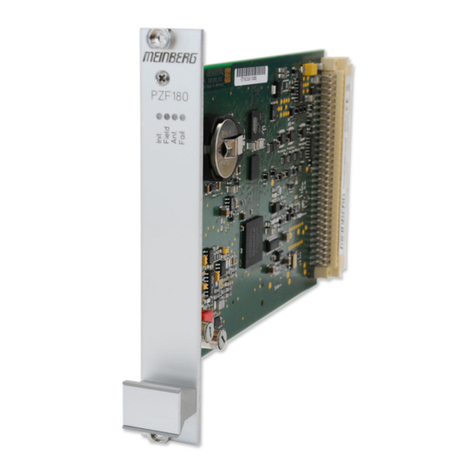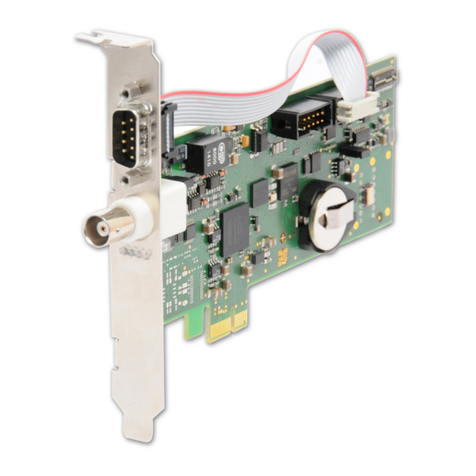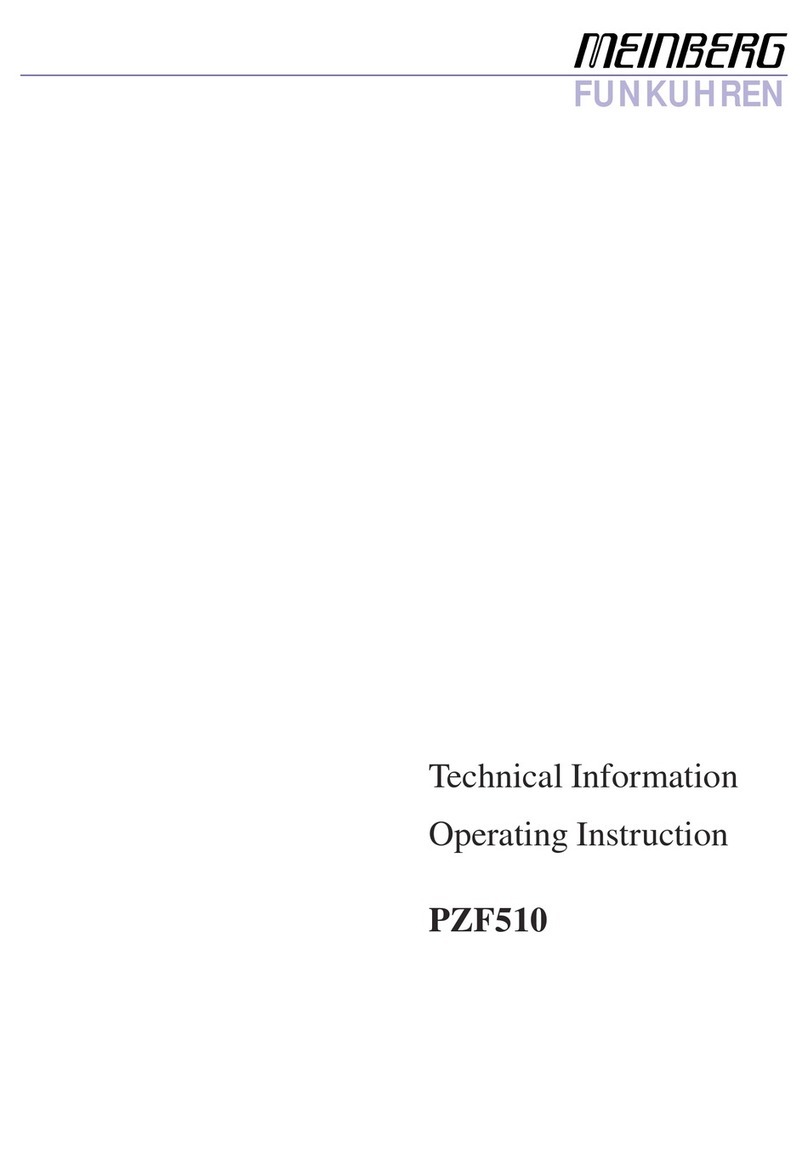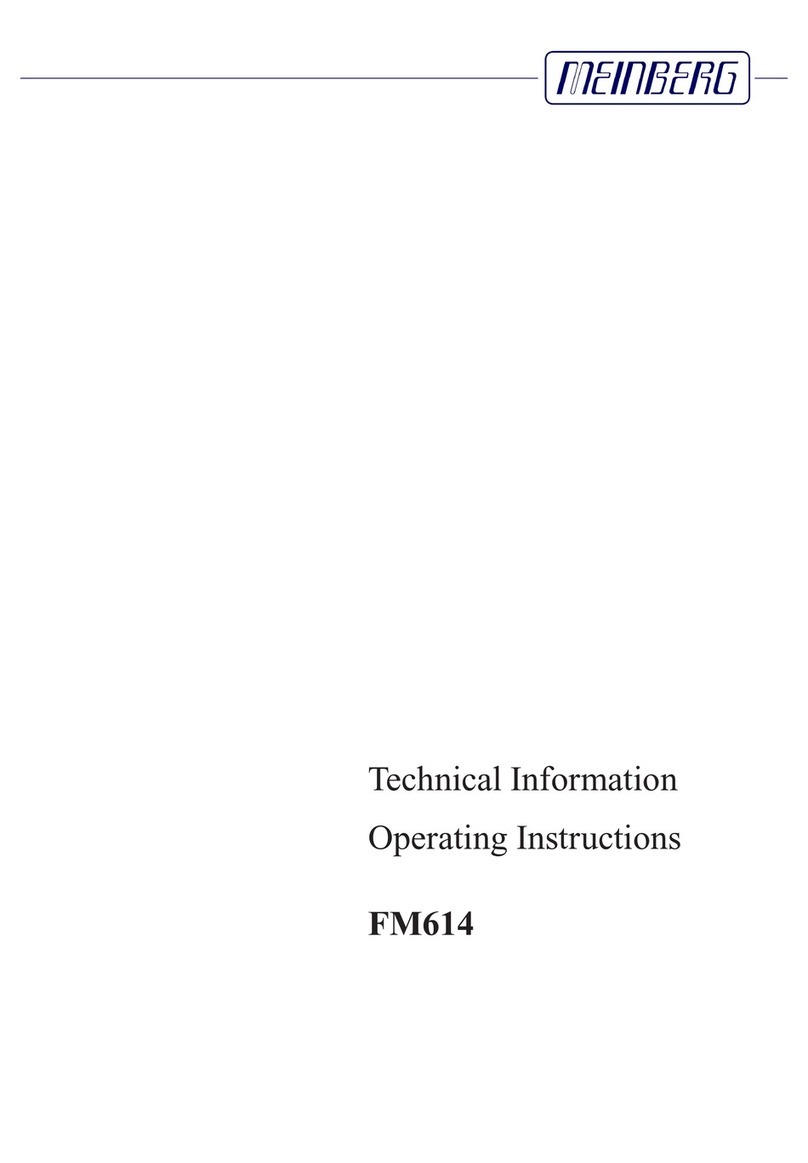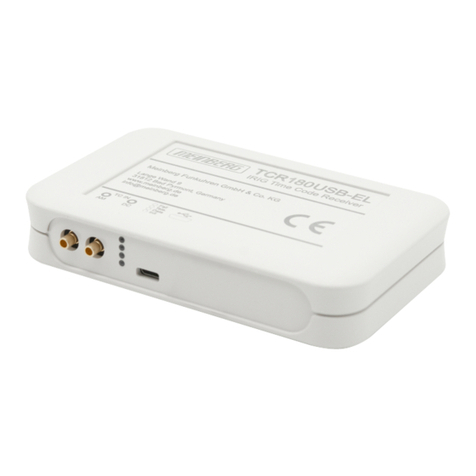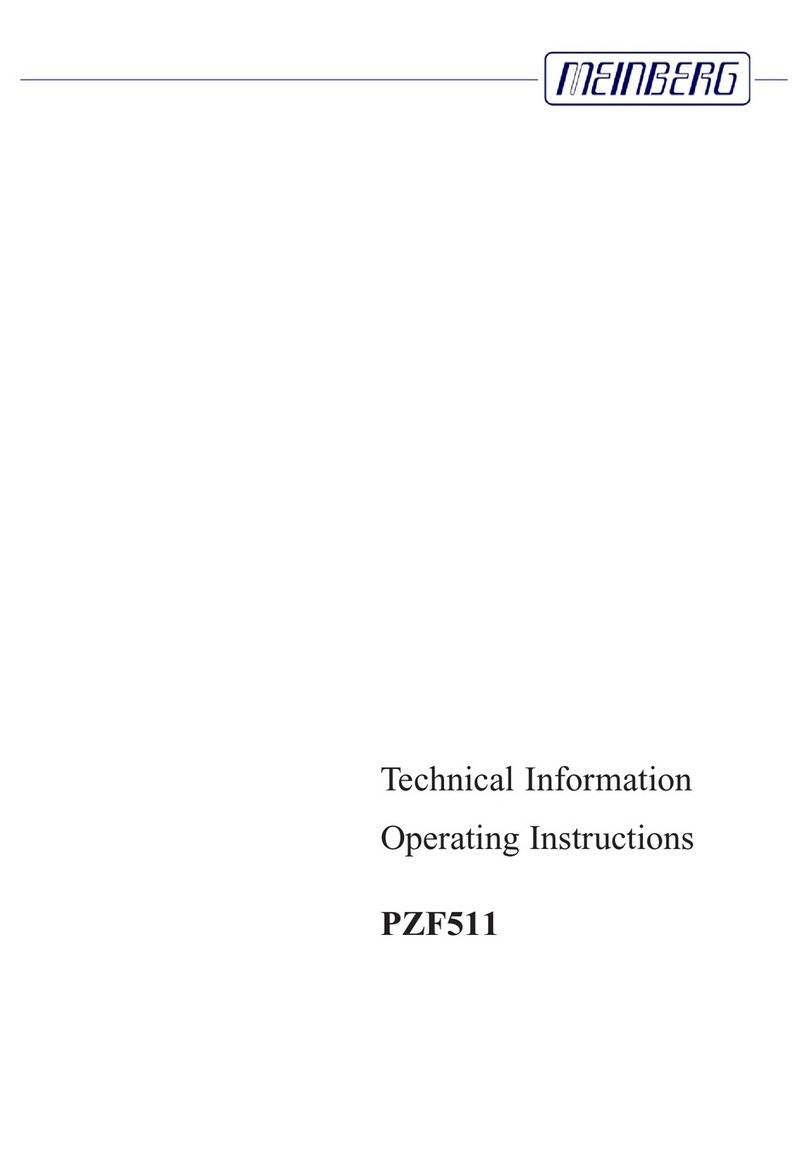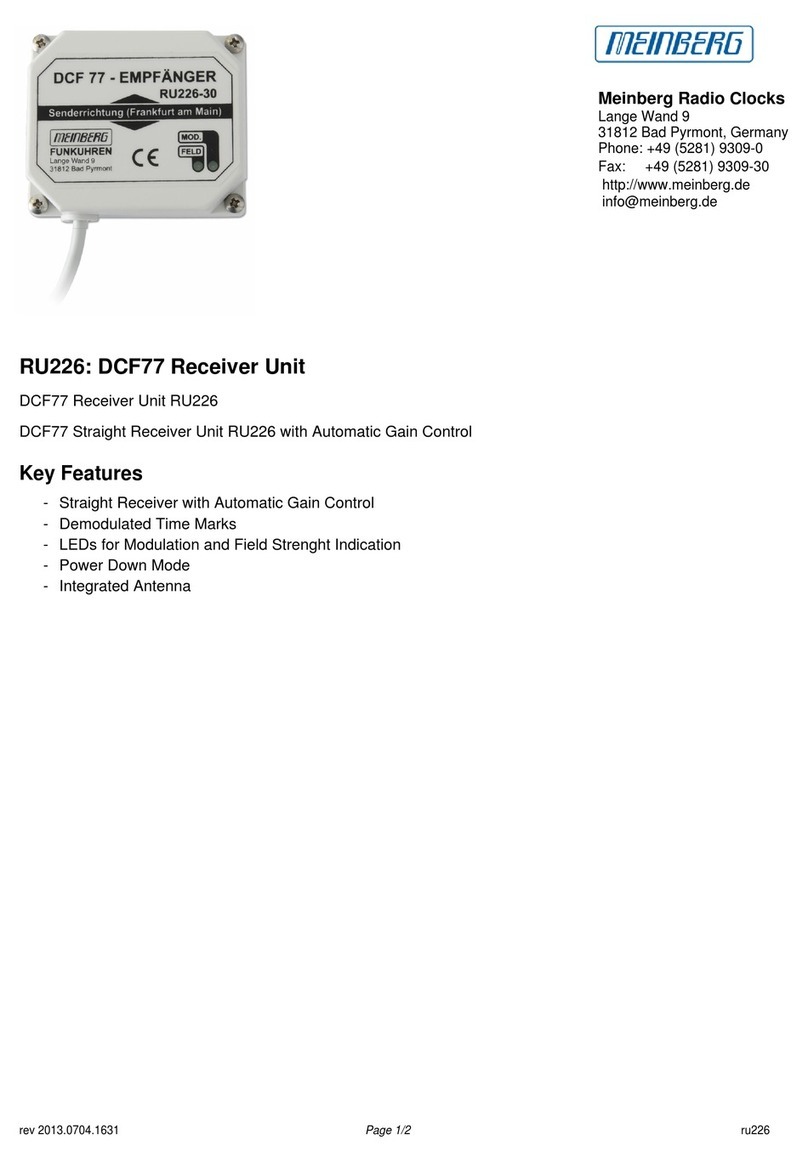
Table of Contents
1 General Details 1
2 Safety Hints 3
2.1 ContentoftheUSBstick....................................... 4
3 Frontpanel 5
4 General information about GPS164 6
5 Block diagram GPS164xhs 7
6 GPS164 Features 8
6.1 Time Zone and Daylight Saving . . . . . . . . . . . . . . . . . . . . . . . . . . . . . . . . . . . 8
6.2 Pulseoutputs ............................................. 9
6.3 AsynchronousSerialPorts....................................... 10
6.4 Timecodeoutputs .......................................... 10
6.4.1 Introduction.......................................... 10
6.4.2 GeneratedTimeCodes .................................... 11
6.4.3 Codegeneration........................................ 11
6.4.4 IRIGStandardFormat..................................... 12
6.4.5 AFNORStandardFormat................................... 13
6.4.6 Assignment of CF Segment in IEEE1344 Code . . . . . . . . . . . . . . . . . . . . . . . . 14
7 Installation 15
7.1 Powersupply.............................................. 16
7.2 Assignment of the DSUB connectors . . . . . . . . . . . . . . . . . . . . . . . . . . . . . . . . . 16
7.3 BNCconnectorGPSAnt ....................................... 17
7.4 ErrorRelay............................................... 17
7.5 MountingtheGPSAntenna...................................... 18
7.5.1 Assembly of the GPS antenna surge protector . . . . . . . . . . . . . . . . . . . . . . . . 18
7.6 PoweringUptheSystem ....................................... 20
7.7 ChangetheFuse............................................ 20
8 The Front Panel Layout 21
8.1 FAILLED ............................................... 21
8.2 LOCKLED .............................................. 21
8.3 OCxLEDs............................................... 21
8.4 BSLKey(hidden)........................................... 21
9 Technical Specifications GPS164DAHS 22
9.1 Technical Specications GPS Antenna . . . . . . . . . . . . . . . . . . . . . . . . . . . . . . . . 24
9.2 TimeStrings.............................................. 25
9.2.1 Format of the Meinberg Standard Time String . . . . . . . . . . . . . . . . . . . . . . . . 25
9.2.2 Format of the Meinberg GPS Time String . . . . . . . . . . . . . . . . . . . . . . . . . . 26
9.2.3 Format of the Meinberg Capture String . . . . . . . . . . . . . . . . . . . . . . . . . . . 27
9.2.4 Format of the SAT Time String . . . . . . . . . . . . . . . . . . . . . . . . . . . . . . . 28
9.2.5 Format of the Uni Erlangen String (NTP) . . . . . . . . . . . . . . . . . . . . . . . . . . 29
9.2.6 Format of the NMEA 0183 String (RMC) . . . . . . . . . . . . . . . . . . . . . . . . . . 31
9.2.7 Format of the NMEA 0183 String (GGA) . . . . . . . . . . . . . . . . . . . . . . . . . . 32
9.2.8 Format of the NMEA 0183 String (ZDA) . . . . . . . . . . . . . . . . . . . . . . . . . . 33
9.2.9 Format of the ABB SPA Time String . . . . . . . . . . . . . . . . . . . . . . . . . . . . 34
9.2.10 Format of the Computime Time String . . . . . . . . . . . . . . . . . . . . . . . . . . . . 35
9.2.11 Format of the RACAL standard Time String . . . . . . . . . . . . . . . . . . . . . . . . . 36
9.2.12 Format of the SYSPLEX-1 Time String . . . . . . . . . . . . . . . . . . . . . . . . . . . 37
0



